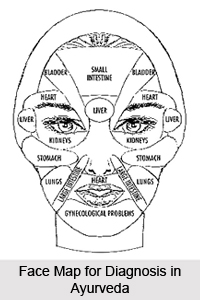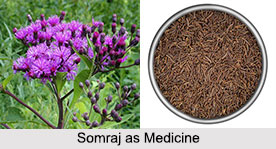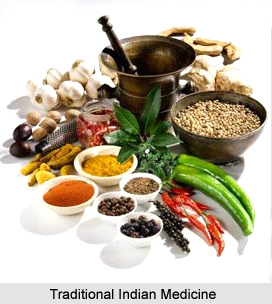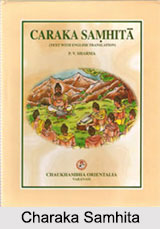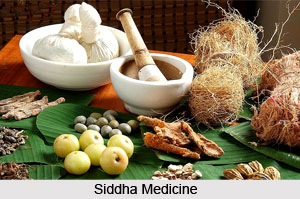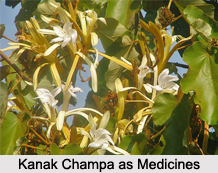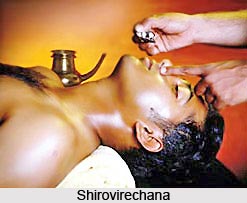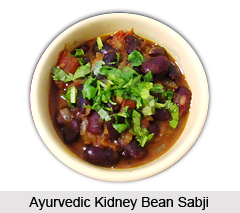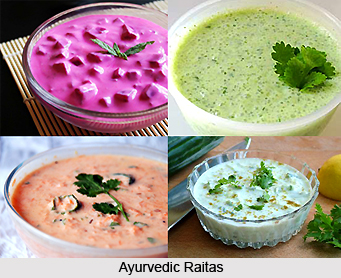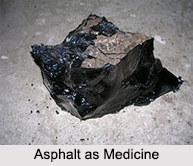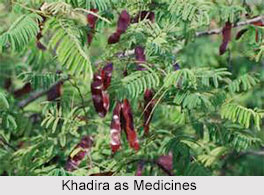 Khadira or catechu is obtained by boiling the wood of Acacia catechu in water and inspissating the decoction. The chief use of catechu in India is as an ingredient of the packet of betel leaf chewed by the natives. For this purpose it is sometimes aromatized in various ways.
Khadira or catechu is obtained by boiling the wood of Acacia catechu in water and inspissating the decoction. The chief use of catechu in India is as an ingredient of the packet of betel leaf chewed by the natives. For this purpose it is sometimes aromatized in various ways.
Bhavaprakasa mentions 2 varieties of catechu, namely, Khadira or the ordinary dark brown catechu, and Kadara or pale catechu. This last is known as papri khaer, or catechu having a laminated structure. Pale catechu is a porous, opaque, earthy looking substance with a laminated texture, light and easily broken.
Health Benefits of Khadira
Khadira is described as astringent, cooling, digestive, and useful in hoarseness, diseases of the mouth and gums, cough and skin diseases. In skin diseases, catechu is much used in a variety of forms both externally and internally. A decoction of catechu is used as a wash for inflamed parts and ulcers. Water in which catechu is dissolved is recommended to be used as a drink, wash and bath.
Dose of Khadira in Medicine
In diarrhoea it is sometimes used in combination with other medicines of its class, as for example in a prescription in the Bhaisajya Ratnavali, called "Grahani Kapata Rasa", which contains catechu along with a large number of other drugs, but it is not regarded as an important medicine for this disease.
In hoarseness, catechu rubbed with oil, is recommended to be kept in the mouth. In diseases of the mouth and gums the following called "Svalpakhadira Vatika" is a favourite medicine. To prepare it, take catechu 12 seers and a half, water 64 seers, boil down to 8 seers, then add nutmeg, camphor, betel-nuts and kakkola, each half a seer in fine powder and prepare a mass fit for being made into balls or boluses. They are directed to be kept in the mouth, in affections of the teeth, gums, palate and tongue.
The following decoction called "Khadirashtaka" is prescribed by several writers for internal use in boils, prurigo, measles and other skin diseases. Take catechu, the 3 myrobalans, neem bark, leaves of Trichosanthes dioica (patala), gulancha and Justicia Adhatoda (vasaka), equal parts and prepare a decoction in the usual way.
Sarangadhara describes a fermented liquor called "Khadirarishta" for use in skin diseases. It is prepared with catechu and the wood of Pinus Deodara and some other ingredients in smaller proportions.
Related Articles
Ayurveda
Origin of Ayurveda
Ayurveda Medication
Elements of Ayurveda
Concepts of Ayurveda
Ancient Literature of Ayurveda
Sushruta Samhita






